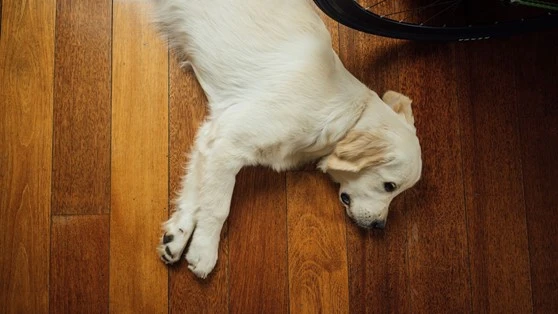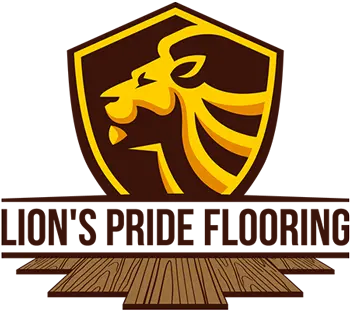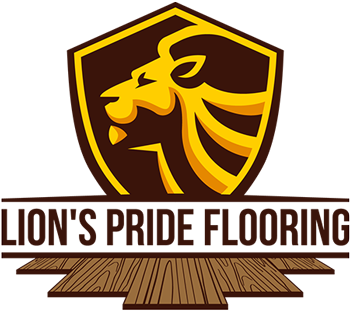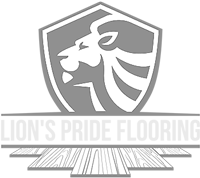
When you’re picking out new floors for your home, there are a million things to think about—how they’ll look, how they’ll feel under your feet, and, of course, how long they’ll last. If you’ve got kids running around, pets chasing toys (or their tails), or simply a lot of foot traffic, durability shoots straight to the top of your must-have list. If you are looking at hardwood flooring, you might even ask the question “what type of hardwood flooring is most durable? Well, Hardwood flooring remains a popular choice due to its timeless beauty and longevity, but not all hardwoods are created equal in terms of durability. Some species can handle the daily grind like a pro, while others might show every scratch, scuff, and spill.
So, where do you even start? Lion’s Pride Flooring has put this guide together that will explore the most durable hardwood flooring options available, helping you make an informed decision for your home. We’ll delve into the factors that contribute to durability, compare different wood species, and provide insights on maintenance and care to ensure your floors stand the test of time. Whether you’re tackling a full-scale renovation or just replacing a few rooms, this guide will help you choose floors that can take whatever life throws at them—and look good while doing it.
What Makes Hardwood Flooring Durable?
Before we dive into specific wood types, it’s crucial to understand what makes hardwood flooring durable. It’s not just about how hard the wood is—though that’s a big piece of the puzzle. Several factors contribute to a floor’s overall resilience:
Janka Hardness Scale
The Janka Hardness Scale is the industry standard for measuring wood hardness. It quantifies the force required to embed a 11.28-millimeter steel ball halfway into a wood sample. This might sound a bit technical, but it’s really just a fancy way of measuring how much force a piece of wood can take before it dents. The higher the Janka rating, the more resistant the wood is to dents and wear.
Grain Pattern
Here’s something that might surprise you—how a wood’s grain looks can impact how durable it seems. Woods with more pronounced grain patterns tend to camouflage minor damage better than those with uniform appearances. That subtle texture makes any minor imperfections blend right in, which is a huge win if your household isn’t exactly gentle on your floors.
Finish Quality
A high-quality finish acts as a protective layer, enhancing the wood’s natural durability. The wood itself might be tough, but without a quality finish, it won’t stand up to much. Modern finishes like aluminum oxide and UV-cured urethane offer superior scratch and wear resistance. Plus, some of these finishes have come a long way in offering a more natural look without sacrificing durability.
Color and Tone
Surprisingly, color plays a role in perceived durability. Here’s a tip that most people don’t think about: lighter-colored woods can actually be better at hiding everyday wear and tear. Those lighter tones and variations in color can camouflage dust, small scratches, and dents much better than dark, uniform floors, which tend to showcase every little mark.
Solid vs. Engineered Construction
While solid hardwood is traditionally considered more durable, advances in engineered hardwood technology have leveled the playing field. Some engineered options now offer comparable or even superior durability to solid hardwood. It’s also more resistant to moisture and better at handling temperature changes, making it a great option for homes in areas with humidity or fluctuating climates.
The Most Durable Hardwood Flooring Options
Now, let’s explore some of the most durable hardwood flooring choices available:
1. Hickory (Janka Hardness: 1820)
Hickory is one of the most durable domestic hardwoods, known for its rugged appearance and complex grain patterns. Its complex grain pattern doesn’t just look amazing—it also hides scratches like a pro. Its high Janka rating makes it resistant to dents and scratches, while its varied look helps hide wear and tear. If your home sees a ton of foot traffic (think kids, pets, guests, you name it), hickory will be your best friend.
Pros:
• Extremely durable for a domestic species
• Grain pattern hides scratches well
• Widely available
Cons:
• Distinct rustic look may not suit all design styles
• Can be more challenging to install due to its hardness
2. Maple (Janka Hardness: 1450)
Maple offers a great balance of durability and aesthetic appeal. Maple’s toughness allows it to stand up to foot traffic without showing too much wear, but what’s really awesome is how well it hides small scratches—especially in those lighter shades.
Pros:
• Durable and resistant to wear
• Light color hides dust and small scratches
• Clean, modern look
Cons:
• Can be difficult to stain evenly
• May yellow slightly with age and sun exposure
3. White Oak (Janka Hardness: 1360)
White Oak is a popular choice due to its durability and water resistance. While it’s not the hardest wood on the Janka scale, it makes up for that with its natural resilience to moisture and its incredible stability. If you’re looking for a hardwood that can handle humidity (or the occasional spill), White Oak is a top contender.
Pros:
• Excellent water resistance
• Durable and stable
• Takes stain well for varied finishes
Cons:
• Slightly softer than some other options
• Can be more expensive than red oak
4. Brazilian Cherry (Jatoba) (Janka Hardness: 2820)
Brazilian Cherry, also known as Jatoba, is an exotic hardwood known for its exceptional hardness and rich, reddish-brown color. This wood is known for its rich, deep red tones and its insane hardness. If you’re after flooring that can handle a beating and still look gorgeous, Brazilian Cherry has you covered. It’s not just about aesthetics, either—Brazilian Cherry is naturally resistant to pests and decay, making it a smart investment for the long haul.
Pros:
• Extremely durable and resistant to wear
• Beautiful, exotic appearance
• Resistant to pests and decay
Cons:
• Can be expensive
• May darken over time with sun exposure
5. Strand-Woven Bamboo (Janka Hardness: 3000-4000)
While technically a grass, strand-woven bamboo deserves mention for its exceptional durability. The manufacturing process creates a product that can be even harder than traditional hardwoods. Plus, it’s eco-friendly, renewable, and available in a wide variety of colors and finishes. So, if sustainability is top of mind for you, bamboo could be your flooring hero.
Pros:
• Extremely hard and durable
• Eco-friendly and sustainable
• Available in a wide range of colors and styles
Cons:
• Quality can vary significantly between manufacturers
• Some types can be prone to scratching despite their hardness
Innovative Durability-Enhancing Technologies
Recent advancements have introduced new options for those seeking the most durable hardwood flooring:
Densified Wood Flooring
Some manufacturers now offer “densified” wood flooring, which uses heat and pressure to compress wood fibers, dramatically increasing hardness and durability. This type of densified flooring can have a Janka rating exceeding 3000—more than double that of standard oak. It’s also highly resistant to scratches and can withstand standing water for extended periods, which makes it a robust option for high-traffic areas or homes with pets.
Advanced Finishes
Today’s finishes do more than just add shine. Modern finish technologies, such as aluminum oxide infused with UV-cured urethane, provide exceptional scratch and wear resistance. These advanced finishes make it possible to enjoy the best of both worlds—tough protection without sacrificing the look and feel of natural wood.
Engineered Hardwood Advancements
Engineered hardwood isn’t just a budget-friendly alternative anymore—it’s a serious contender in the durability department. Thanks to advancements in construction and materials, high-quality engineered hardwoods now rival solid wood in terms of durability, with the added bonus of improved moisture resistance and dimensional stability.


